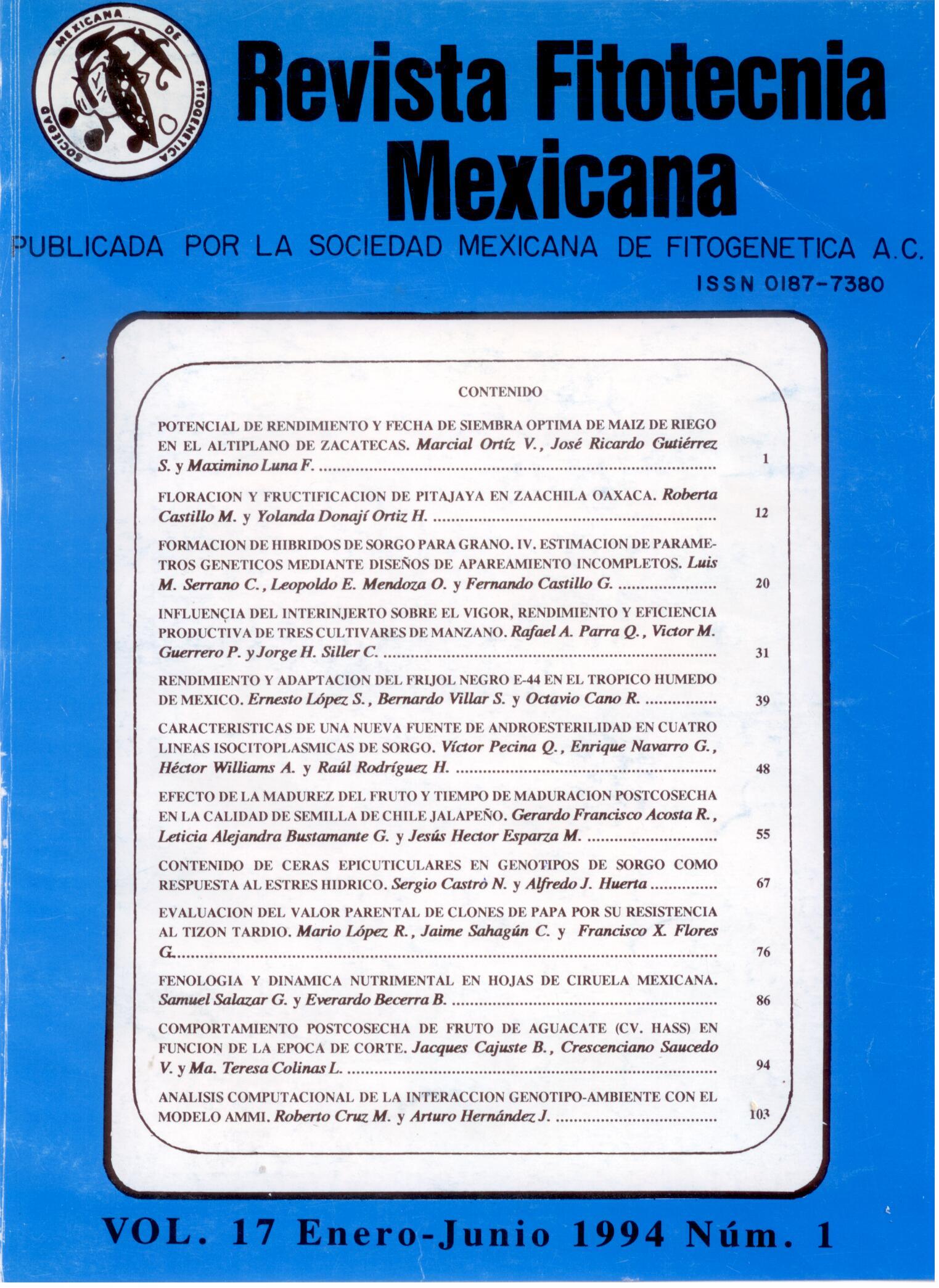CHARACTERISTICS OF A NEW SOURCE OF MALE STERILITY ON FOUR ISOCYTOPLASMIC SORGHUM LINES
Main Article Content
Abstract
In order to increase the cytoplasmic diversity in sorghum (Sorghum bicolor L. Moench) hybrid seed production and to reduce the genetic vulnerability of this crop, new cytoplasmic-genetic male sterility systems have been developed. One of these (A2 Cytoplasm) was introduced to the elite lines of the Sorghum Program, in Río Bravo Experimental Station. The objective of this research was to evaluate the sterility grade and agronomic traits, of four malesterile lines (LRB-102A, LRB-104A, LRB-106A and LRB-110A) in A1 and A2 cytoplasms, in three planting dates (February 20, March 8 and 23 of 1990). A Ramdomized Complete Block design in factorial arrangement with two replications was utilized. The results indicated differences in sterility percentage among lines, cytoplasms, planting dates and its interactions. The line LRB-102A had 100% of male sterility in both cytoplasms, in the three planting dates. On the other hand, A2 lines showed 99.6% sterility average against 98.5% of A1 lines. In the agronomic traits non significant differences were found between cytoplasms (A1 and A2) for days to bloom, head length, exsertion, plant height, an blasting percentage.

